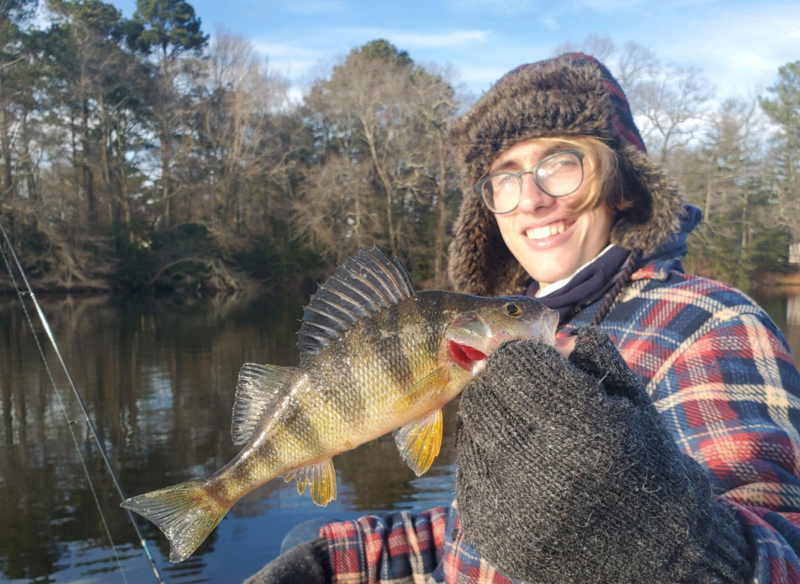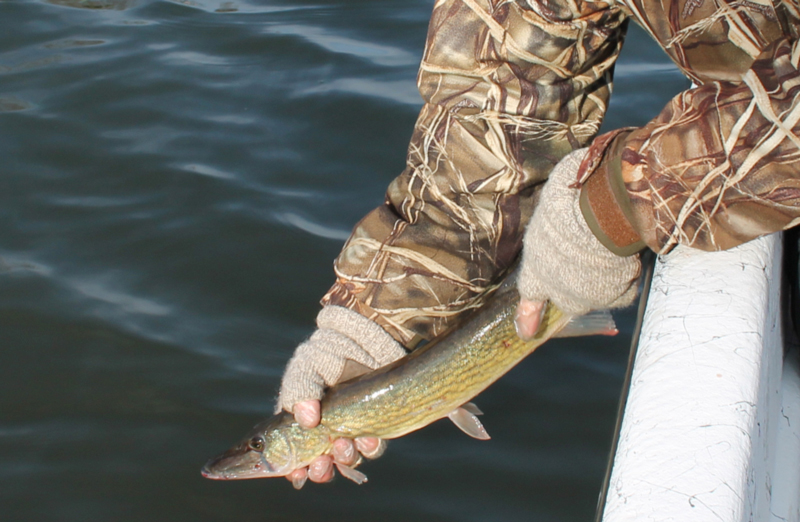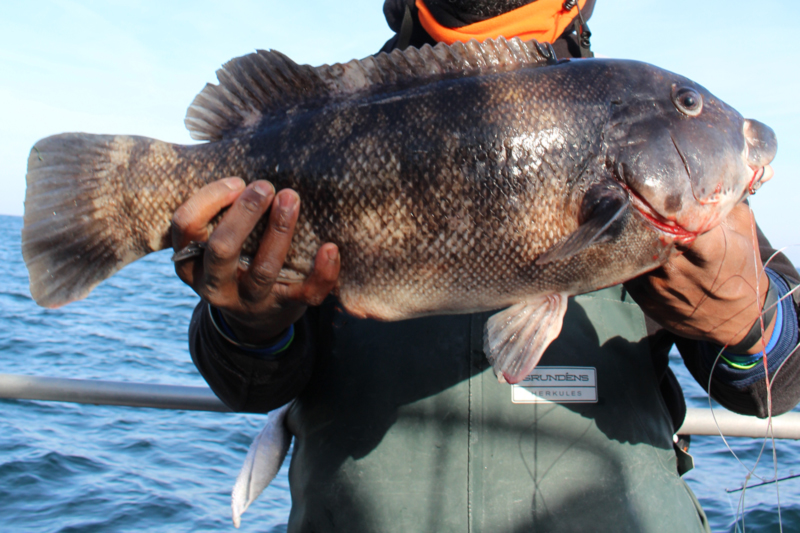You say you did not partake in the ice fishing season and you’re sick and tired of sub-freezing temperatures, not to mention cold winds and being bottled up inside? Us too — thank goodness we’ll soon be putting winter into the rearview. Some days this month it’ll be difficult to head outdoors but others it will be impossible to resist, but regardless of what the weekend brings we have the solution to all your cabin fever ills. And unsurprisingly it’s the very same solution that we find effective for solving virtually every problem in life: go fishing. (Trust us, it works!) That said, if you don’t normally engage in the early spring angling game you may be wondering where the heck you can go to (sort of) reliably bend a rod right about now. Never fear, dear angler. Again, we have the answer. Three of ‘em, actually. So pull out the long johns, freshen up the line on your reels, brew some hot coffee, and try:

The Gig: Perch Jerking, Spring Style
Every year is different, of course, but by the time March hits it should be prime time for perch jerking. Early in the month look to still find the fish just downstream of the spawning grounds in holes and channels if it’s been exceptionally chilly in February, but don’t be afraid to start checking out those upriver areas after the first few warm, sunny days. And if February has been mild savvy anglers will head right for the spawning zone post-haste.
The Gear
Light or ultra-light spinning gear with six- to eight-pound test line. Shad darts tipped with bull minnow or bull minnow on bottom rigs are the most common offerings, though at times tubes and twisters will get the job done, too.
The Geography
Most of the Chesapeake Bay tributaries support a yellow perch run to one degree or another. The earliest fish will be found where the river or creek bottlenecks and begins to transition from brackish to fresh. Deep holes are usually best at first, then the fish move shallower and closer to the freshwater flow at the headwaters of feeders and creeks. Check out Three Top Spring Perch Run Hotspots to get some ideas of where to try.

The Gig: Fishing for PCBs
Not the bad kind of PCBs, we’re talking about a mix of pickerel, crappie, and bass. All three of these species bite strongly in the early spring, and the “P” comes first because pickerel often bite best early on when the temps are still low. Just remember to slow your presentations down, and consider using live bait even if you’re a lure-lover (the live stuff does tend to work a lot better when the fish are lethargic).
The Gear
Whatever you usually use for freshwater fishing, with one caveat: consider dropping leader size if you’re after crappie. They can get line-shy, and the cold spring waters hold fewer suspended solids than in the summer. As long as there hasn’t been a recent weather event where you fish, the clarity will likely be far better than you’re used to. At times like this the crappie often won’t bite well until you go all the way down to four-pound test.
The Geography
All the usual summer freshwater suspects including reservoirs, lakes, and the Eastern Shore millponds. We have to give the millponds a special call-out, though. Early spring can be a great time to fish these waters, because they’re so shallow — in many of the millponds four feet is a “deep” spot. That means that temperatures can climb fast during a few days of sunny weather, kicking the fish into gear.

The Gig: Tautog in the Ocean
If you want an oceanic adventure and see a weather window, tog will likely be the target. They bite great in the cold… sort of. Truth be told tautog are very finicky fish which bite great one day, then get lockjaw the next. The bite can change hour to hour and tide to tide, making them a frustrating target. That said, few things are as satisfying as filling the cooler on a chilly Atlantic Ocean when the spring sun is shining.
The Gear
Stiff rods that can handle five to 10 ounces of weight and are long enough to pendulum up and down as the boat rocks (so the sinker doesn’t get yanked up and down, something that turns the tog off). Green or white crab (out in the ocean), or peeler crab (inshore) baits are usually the ticket, though sand fleas can come in handy as well (also inshore). Two-hook Snafu rigs or top-and-bottom rigs will get the job done.
The Geography
Any of the wrecks and reefs off the coast, from Delaware down through Virginia. As a rule of thumb the colder it is the deeper you’ll want to fish, and also note that the closer you stay to shore the smaller the fish are likely to be. Tog are slow growers and don’t move around much, so the wrecks close to home often get picked over.
Which of these bites is best right now? Keep your eyes on our weekly fishing reports for specifics on where and when the fish are biting.